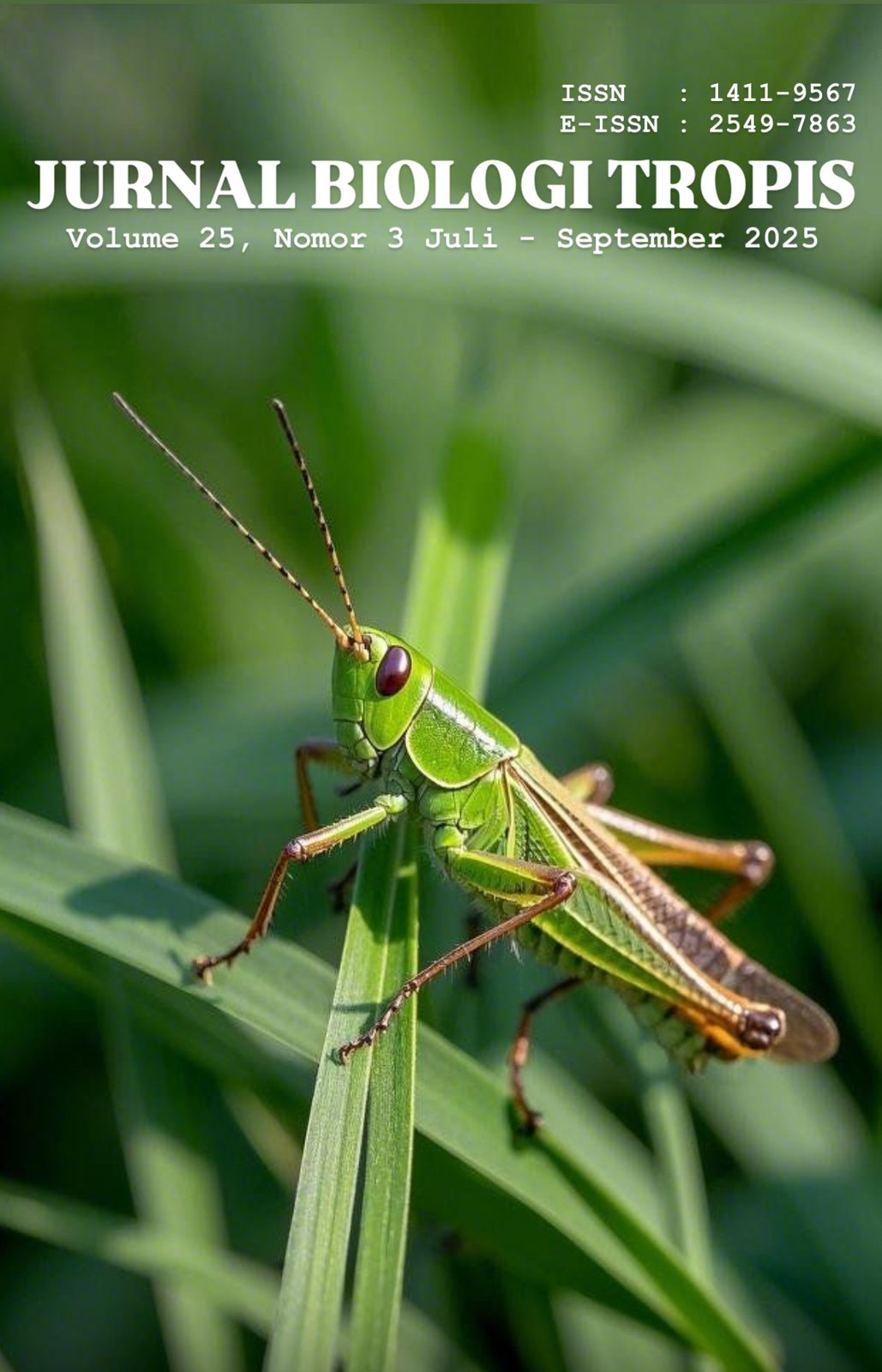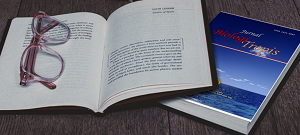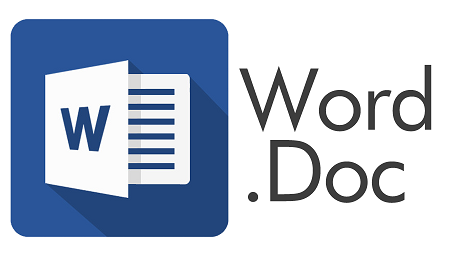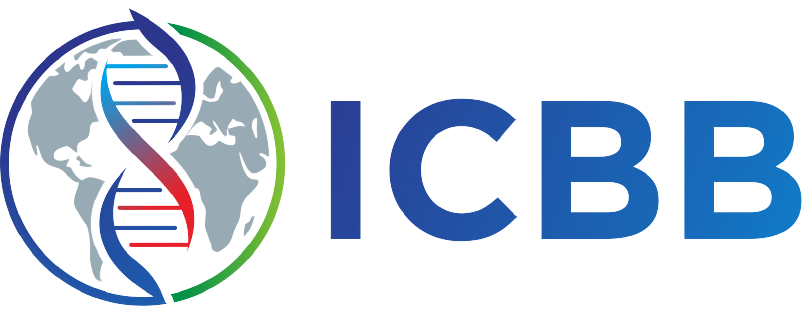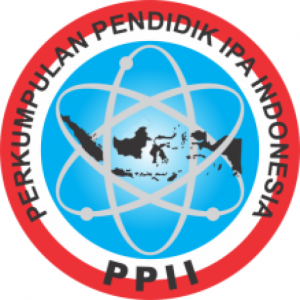Neurorestoration After Traumatic Brain Injury: Innovative Therapies for Restoring Function and Quality of Life
Authors
Ni Nyoman Ayu Susilawati , Siti Noururrifqiyati Juna Putri , Oktavianus Prayitno , Melisa Parida Djayanty PanjaitanDOI:
10.29303/jbt.v25i3.9531Published:
2025-07-15Issue:
Vol. 25 No. 3 (2025): Juli-SeptemberKeywords:
Neurorestoration, neurogenesis, traumatic brain injury.Articles
Downloads
How to Cite
Downloads
Metrics
Abstract
Traumatic brain injury (TBI) is a major cause of death and disability globally, with 50 million cases annually and increasing emergency department visits. Despite advances in management, such as decompressive craniotomy and hypothermia, severe TBI still leads to poor outcomes in about 50% of patients, emphasizing the limited effectiveness of conventional therapies. This has led to the development of neurorestorative approaches to enhance brain function and recovery after injury. Literature was sourced from Google Scholar, ScienceDirect, and PubMed, with studies from 2015–2025, in English or Indonesian, and involving human or animal subjects. Neurorestorative strategies include cellular therapies (e.g., mesenchymal stem cells), neurostimulation (invasive and non-invasive methods), pharmacological interventions (e.g., erythropoietin and statins), and supportive therapies (e.g., hyperbaric oxygen). Cellular therapy shows promise in promoting neurogenesis and recovery, though large-scale trials are needed. Neurostimulation has been shown to improve consciousness and neurological function in patients with chronic consciousness disorders, while pharmacological and supportive treatments present mixed results and require more research. Neurorestorative therapies offer hope for TBI recovery, but study limitations, including design and sample size, prevent generalization. Further research and large-scale randomized clinical trials are necessary to ensure safety, effectiveness, and optimal integration of neurorestorative modalities.
References
Bambakidis, T., Dekker, S. E., Williams, A. M., Biesterveld, B. E., Bhatti, U. F., Liu, B., Li, Y., Pickell, Z., Buller, B., & Alam, H. B. (2022). Early treatment with a single dose of mesenchymal stem cell derived extracellular vesicles modulates the brain transcriptome to create neuroprotective changes in a porcine model of traumatic brain injury and hemorrhagic shock. Shock, 57(2), 281-290. https://doi.org/10.1097/SHK.0000000000001889
Boutin, A., Moore, L., Lauzier, F., Chassé, M., English, S., Zarychanski, R., McIntyre, L., Griesdale, D., Fergusson, D. A., & Turgeon, A. F. (2017). Transfusion of red blood cells in patients with traumatic brain injuries admitted to Canadian trauma health centres: A multicentre cohort study. BMJ Open, 7(3), e014472. https://doi.org/10.1136/bmjopen-2016-014472
Capizzi, A., Woo, J., & Verduzco-Gutierrez, M. (2020). Traumatic brain injury: An overview of epidemiology, pathophysiology, and medical management. Med Clin North Am, 104(2), 213-238. https://doi.org/10.1016/j.mcna.2019.11.001
Chen, M. M., Zhao, G. W., He, P., Jiang, Z. L., Xi, X., Xu, S. H., Ma, D. M., Wang, Y., Li, Y. C., & Wang, G. H. (2015). Improvement in the neural stem cell proliferation in rats treated with modified "Shengyu" decoction may contribute to the neurorestoration. J Ethnopharmacol, 165, 9-19. https://doi.org/10.1016/j.jep.2015.02.037
Chen, Y., Li, J., Ma, B., Li, N., Wang, S., Sun, Z., Xue, C., Han, Q., Wei, J., & Zhao, R. C. (2020). MSC-derived exosomes promote recovery from traumatic brain injury via microglia/macrophages in rat. Aging (Albany NY), 12(18), 18274-18296. https://doi.org/10.18632/aging.103692
Cheng, P., Yin, P., Ning, P., Wang, L., Cheng, X., Liu, Y., Schwebel, D. C., Liu, J., Qi, J., Hu, G., & Zhou, M. (2017). Trends in traumatic brain injury mortality in China, 2006-2013: A population-based longitudinal study. PLoS Medicine, 14(7), e1002332. https://doi.org/10.1371/journal.pmed.1002332
Chudy, D., Deletis, V., Almahariq, F., Marčinković, P., Škrlin, J., & Paradžik, V. (2018). Deep brain stimulation for the early treatment of the minimally conscious state and vegetative state: Experience in 14 patients. Journal of Neurosurgery, 128(4), 1189-1198. https://doi.org/10.3171/2016.10.JNS161071
Chudy, D., Deletis, V., Paradžik, V., Dubroja, I., Marčinković, P., Orešković, D., Chudy, H., Raguž, M. (2023). Deep brain stimulation in disorders of consciousness: 10 years of a single center experience. Scientific Reports, 13(1), 19491. https://doi.org/10.1038/s41598-023-46300-y
Cox, C. S. Jr., Notrica, D. M., Juranek, J., Miller, J. H., Triolo, F., Kosmach, S., Savitz, S. I., Adelson, P. D., Pedroza, C., Olson, S. D., Scott, M. C., Kumar, A., Aertker, B. M., Caplan, H. W., Jackson, M. L., Gill, B. S., Hetz, R. A., Lavoie, M. S., & Ewing-Cobbs, L. (2024). Autologous bone marrow mononuclear cells to treat severe traumatic brain injury in children. Brain, 147(5), 1914-1925. https://doi.org/10.1093/brain/awae005
Dachir, S., Shabashov, D., Trembovler, V., Alexandrovich, A. G., Benowitz, L. I., & Shohami, E. (2014). Inosine improves functional recovery after experimental traumatic brain injury. Brain Research, 1555, 78-88. https://doi.org/10.1016/j.brainres.2014.01.044
D'Arcy, R. C. N., Greene, T., Greene, D., Frehlick, Z., Fickling, S. D., Campbell, N., Etheridge, T., Smith, C., Bollinger, F., Danilov, Y., Livingstone, A., Tannouri, P., Martin, P., & Lakhani, B. (2020). Portable neuromodulation induces neuroplasticity to re-activate motor function recovery from brain injury: A high-density MEG case study. Journal of NeuroEngineering and Rehabilitation, 17(1), 158. https://doi.org/10.1186/s12984-020-00772-5
De Freitas, D. J., De Carvalho, D., Paglioni, V. M., Brunoni, A. R., Valiengo, L., Thome-Souza, M. S., Guirado, V. M. P., Zaninotto, A. L., & Paiva, W. S. (2021). Effects of transcranial direct current stimulation (tDCS) and concurrent cognitive training on episodic memory in patients with traumatic brain injury: A double-blind, randomised, placebo-controlled study. BMJ Open, 11(8), e045285. https://doi.org/10.1136/bmjopen-2020-045285
Demertzi, A., Tagliazucchi, E., Dehaene, S., Deco, G., Barttfeld, P., Raimondo, F., et al. (2019). Human consciousness is supported by dynamic complex patterns of brain signal coordination. Science Advances, 5(2), eaat7603. https://doi.org/10.1126/sciadv.aat7603
Deng-Bryant, Y., Readnower, R. D., Leung, L. Y., Cunningham, T. L., Shear, D. A., & Tortella, F. C. (2015). Treatment with amnion-derived cellular cytokine solution (ACCS) induces persistent motor improvement and ameliorates neuroinflammation in a rat model of penetrating ballistic-like brain injury. Restorative Neurology and Neuroscience, 33(2), 189-203. https://doi.org/10.3233/RNN-140455
Farzanegan, G. R., Derakhshan, N., Khalili, H., Ghaffarpasand, F., & Paydar, S. (2017). Effects of atorvastatin on brain contusion volume and functional outcome of patients with moderate and severe traumatic brain injury: A randomized double-blind placebo-controlled clinical trial. Journal of Clinical Neuroscience, 44, 143-147. https://doi.org/10.1016/j.jocn.2017.06.010
Gantner, D. C., Bailey, M., Presneill, J., French, C. J., Nichol, A., Little, L., Bellomo, R., EPO-TBI Investigators, & the ANZICS Clinical Trials Group. (2018). Erythropoietin to reduce mortality in traumatic brain injury: A post-hoc dose-effect analysis. Annals of Surgery, 267(3), 585-589. https://doi.org/10.1097/SLA.0000000000002142
Hakon, J., Moghiseh, M., Poulsen, I., Øland, C. M. L., Hansen, C. P., & Sabers, A. (2020). Transcutaneous vagus nerve stimulation in patients with severe traumatic brain injury: A feasibility trial. Neuromodulation, 23(6), 859-864. https://doi.org/10.1111/ner.13148
Hellewell, S. C., Conquest, A., Little, L., Vallance, S., Board, J., Bellomo, R., Cooper, D. J., & Morganti-Kossmann, M. C. (2020). EPO treatment does not alter acute serum profiles of GFAP and S100B after TBI: A brief report on the Australian EPO-TBI clinical trial. Journal of Clinical Neuroscience, 76, 5-8. https://doi.org/10.1016/j.jocn.2020.04.081
Hitti, F. L., Piazza, M., Sinha, S., Kvint, S., Hudgins, E., Baltuch, G., Diaz-Arrastia, R., Davis, K. A., Litt, B., Lucas, T., & Chen, H. I. (2020). Surgical Outcomes in Post-Traumatic Epilepsy: A Single Institutional Experience. Operative neurosurgery (Hagerstown, Md.), 18(1), 12–18. https://doi.org/10.1093/ons/opz043
Hui, J., Feng, J., Tu, Y., Zhang, W., Zhong, C., Liu, M., Wang, Y., Long, L., Chen, L., Liu, J., Mou, C., Qiu, B., Huang, X., Huang, Q., Zhang, N., Yang, X., Yang, C., Li, L., Ma, R., Wu, X., & LTH-1 Trial collaborators. (2021). Safety and efficacy of long-term mild hypothermia for severe traumatic brain injury with refractory intracranial hypertension (LTH-1): A multicenter randomized controlled trial. EClinicalMedicine, 32, 100732. https://doi.org/10.1016/j.eclinm.2021.100732
Hur, J. Y., Frost, G. R., Wu, X., Crump, C., Pan, S. J., Wong, E., Barros, M., Li, T., Nie, P., Zhai, Y., Wang, J. C., Tcw, J., Guo, L., McKenzie, A., Ming, C., Zhou, X., Wang, M., Sagi, Y., Renton, A. E., Esposito, B. T., … Li, Y. M. (2020). The innate immunity protein IFITM3 modulates γ-secretase in Alzheimer's disease. Nature, 586(7831), 735–740. https://doi.org/10.1038/s41586-020-2681-2
Hutchinson, P. J., Kolias, A. G., Timofeev, I. S., Corteen, E. A., Czosnyka, M., Timothy, J., Anderson, I., Bulters, D. O., Belli, A., Eynon, C. A., Wadley, J., Mendelow, A. D., Mitchell, P. M., Wilson, M. H., Critchley, G., Sahuquillo, J., Unterberg, A., Servadei, F., Teasdale, G. M., Pickard, J. D., & RESCUEicp Trial Collaborators. (2016). Trial of decompressive craniectomy for traumatic intracranial hypertension. The New England Journal of Medicine, 375(12), 1119–1130. https://doi.org/10.1056/NEJMoa1605215
Jiang, J. Y., Gao, G. Y., Feng, J. F., Mao, Q., Chen, L. G., Yang, X. F., Liu, J. F., Wang, Y. H., Qiu, B. H., & Huang, X. J. (2019). Traumatic brain injury in China. Lancet Neurology, 18(3), 286-295. https://doi.org/10.1016/S1474-4422(18)30469-1
Kabatas, S., Civelek, E., Boyalı, O., Sezen, G. B., Ozdemir, O., Bahar-Ozdemir, Y., Kaplan, N., Savrunlu, E. C., & Karaöz, E. (2024). Safety and efficiency of Wharton's Jelly-derived mesenchymal stem cell administration in patients with traumatic brain injury: First results of a phase I study. World Journal of Stem Cells, 16(6), 641–655. https://doi.org/10.4252/wjsc.v16.i6.641.
Kabatas, S., Civelek, E., Sezen, G. B., Kaplan, N., Savrunlu, E. C., Cetin, E., Diren, F., & Karaoz, E. (2020). Functional recovery after Wharton's Jelly-derived mesenchymal stem cell administration in a patient with traumatic brain injury: A pilot study. Turkish Neurosurgery, 30(6), 914–922. https://doi.org/10.5137/1019-5149.JTN.31732-20.1
Kaur, P., & Sharma, S. (2018). Recent advances in pathophysiology of traumatic brain injury. Current Neuropharmacology, 16(8), 1224–1238. https://doi.org/10.2174/1570159X15666170613083606
Kawabori, M., Weintraub, A. H., Imai, H., et al. (2021). Cell therapy for chronic TBI: Interim analysis of the randomized controlled STEMTRA trial. Neurology, 96(8), e1202–e1214. https://doi.org/10.1212/WNL.0000000000011450
Khalili, H., Derakhshan, N., Niakan, A., et al. (2017). Effects of oral glibenclamide on brain contusion volume and functional outcome of patients with moderate and severe traumatic brain injuries: A randomized double-blind placebo-controlled clinical trial. World Neurosurgery, 101, 130-136. https://doi.org/10.1016/j.wneu.2017.01.103.
Knott, R. J., Harris, A., Higgins, A., Nichol, A., French, C., Little, L., Haddad, S., Presneill, J., Arabi, Y., Bailey, M., Cooper, D. J., Duranteau, J., Huet, O., Mak, A., McArthur, C., Pettilä, V., Skrifvars, M. B., Vallance, S., Varma, D., Wills, J., … Bellomo, R. (2019). Cost-effectiveness of erythropoietin in traumatic brain injury: A multinational trial-based economic analysis. Journal of Neurotrauma, 36(17), 2541–2548. https://doi.org/10.1089/neu.2018.6229
Lemaire, J. J., Sontheimer, A., Pereira, B., et al. (2018). Deep brain stimulation in five patients with severe disorders of consciousness. Annals of Clinical and Translational Neurology, 5(11), 1372-1384. https://doi.org/10.1002/acn3.648
Li, X., & Sundström, E. (2022). Stem cell therapies for central nervous system trauma: The 4 Ws—What, when, where, and why. Stem Cells Translational Medicine, 11(1), 14-25. https://doi.org/10.1093/stcltm/szab006
Li, Y., He, J., Yang, B., Zhang, H., Yang, Z., Fu, J., et al. (2021). Clinical diagnosis guidelines and neurorestorative treatment for chronic disorders of consciousness (2021 China version). Journal of Neurorestoratology, 9(1), 50–59. https://doi.org/10.26599/JNR.2021.9040006
Li, Z. M., Xiao, Y. L., Zhu, J. X., et al. (2016). Recombinant human erythropoietin improves functional recovery in patients with severe traumatic brain injury: A randomized, double-blind and controlled clinical trial. Clinical Neurology and Neurosurgery, 150, 80-83. https://doi.org/10.1016/j.clineuro.2016.09.001
Liraz-Zaltsman, S., Friedman-Levi, Y., Shabashov-Stone, D., et al. (2021). Chemokine receptors CC chemokine receptor 5 and C-X-C motif chemokine receptor 4 are new therapeutic targets for brain recovery after traumatic brain injury. Journal of Neurotrauma, 38(14), 2003-2017. https://doi.org/10.1089/neu.2020.7015
Liu, C., Huang, C., Xie, J., et al. (2020). Potential efficacy of erythropoietin on reducing the risk of mortality in patients with traumatic brain injury: A systematic review and meta-analysis. Biomedical Research International, 2020, 7563868. https://doi.org/10.1155/2020/7563868
Liu, M., Wang, A. J., Chen, Y., et al. (2020). Efficacy and safety of erythropoietin for traumatic brain injury. BMC Neurology, 20(1), 399. https://doi.org/10.1186/s12883-020-01958-z
Lu, Y., Zhou, X., Cheng, J., & Ma, Q. (2021). Early intensified rehabilitation training with hyperbaric oxygen therapy improves functional disorders and prognosis of patients with traumatic brain injury. Advances in Wound Care (New Rochelle), 10(12), 663-670. https://doi.org/10.1089/wound.2018.0876
Ma, D., Wang, N., Fan, X., et al. (2018). Protective effects of cornel iridoid glycoside in rats after traumatic brain injury. Neurochemical Research, 43(4), 959-971. https://doi.org/10.1007/s11064-018-2501-3
Majdan, M., Plancikova, D., Brazinova, A., et al. (2016). Epidemiology of traumatic brain injuries in Europe: A cross-sectional analysis. Lancet Public Health, 1(2), e76-e83. https://doi.org/10.1016/S2468-2667(16)30017-2
Nichol, A., French, C., Little, L., et al. (2015). Erythropoietin in traumatic brain injury (EPO-TBI): A double-blind randomised controlled trial. Lancet, 386(10012), 2499-2506. https://doi.org/10.1016/S0140-6736(15)00386-4
Okonkwo, D. O., McAllister, P., Achrol, A. S., et al. (2024). Mesenchymal stromal cell implants for chronic motor deficits after traumatic brain injury: Post hoc analysis of a randomized trial. Neurology, 103(7), e209797. https://doi.org/10.1212/WNL.0000000000209797
Ortega, F. J., Jolkkonen, J., Mahy, N., & Rodríguez, M. J. (2013). Glibenclamide enhances neurogenesis and improves long-term functional recovery after transient focal cerebral ischemia. Journal of Cerebral Blood Flow & Metabolism, 33(3), 356-364. https://doi.org/10.1038/jcbfm.2012.166
Philip, N. S., Ramanathan, D., Gamboa, B., et al. (2023). Repetitive transcranial magnetic stimulation for depression and posttraumatic stress disorder in veterans with mild traumatic brain injury. Neuromodulation, 26(4), 878-884. https://doi.org/10.1016/j.neurom.2022.11.015
Prevention C for DC and. Drug overdose deaths. Centers for Disease Control and Prevention. National Center for Injury Prevention and Control, Mar. 2021;3.
Ptito, A., Papa, L., Gregory, K., et al. (2021). A prospective, multicenter study to assess the safety and efficacy of translingual neurostimulation plus physical therapy for the treatment of a chronic balance deficit due to mild-to-moderate traumatic brain injury. Neuromodulation, 24(8), 1412-1421. https://doi.org/10.1111/ner.13159
Qian, Q., Ling, Y. T., Zhong, H., Zheng, Y. P., & Alam, M. (2020). Restoration of arm and hand functions via noninvasive cervical cord neuromodulation after traumatic brain injury: A case study. Brain Injury, 34(13-14), 1771-1780. https://doi.org/10.1080/02699052.2020.1850864
Qiu, X., Ping, S., Kyle, M., Chin, L., & Zhao, L. R. (2023). Stem cell factor and granulocyte colony-stimulating factor promote remyelination in the chronic phase of severe traumatic brain injury. Preprint, bioRxiv. https://doi.org/10.1101/2023.01.24.525450
Raguž, M., Predrijevac, N., Dlaka, D., et al. (2021). Structural changes in brains of patients with disorders of consciousness treated with deep brain stimulation. Scientific Reports, 11(1), 4401. https://doi.org/10.1038/s41598-021-83873-y
Redelmeier, D. A., Manzoor, F., & Thiruchelvam, D. (2019). Association between statin use and risk of dementia after a concussion. JAMA Neurology, 76(8), 887-896. https://doi.org/10.1001/jamaneurol.2019.1148
Robertson, C. S., Hannay, H. J., Yamal, J. M., et al. (2014). Effect of erythropoietin and transfusion threshold on neurological recovery after traumatic brain injury: A randomized clinical trial. JAMA, 312(1), 36-47. https://doi.org/10.1001/jama.2014.6490
Rosenfeld, V. J., Maas, A. I., Bragge, P., Morganti-Kossmann, M. C., Manley, G. T., & Gruen, R. L. (2012). Early management of severe traumatic brain injury. Lancet, 380(9847), 1088-1098. https://doi.org/10.1016/S0140-6736(12)60864-2
Schiff, N. D., Giacino, J. T., Butson, C. R., et al. (2023). Thalamic deep brain stimulation in traumatic brain injury: A phase 1, randomized feasibility study. Nature Medicine, 29(12), 3162-3174. https://doi.org/10.1038/s41591-023-02638-4
Schiff, N. D., Giacino, J. T., Kalmar, K., et al. (2007). Behavioural improvements with thalamic stimulation after severe traumatic brain injury. Nature, 448(7153), 600-603. https://doi.org/10.1038/nature06041
Skrifvars, M. B., Bailey, M., French, C., et al. (2017). Erythropoietin in patients with traumatic brain injury and extracranial injury—A post hoc analysis of the erythropoietin traumatic brain injury trial. Journal of Trauma and Acute Care Surgery, 83(3), 449-456. https://doi.org/10.1097/TA.0000000000001594
Skrifvars, M. B., French, C., Bailey, M., et al. (2018). Cause and timing of death and subgroup differential effects of erythropoietin in the EPO-TBI study. Journal of Neurotrauma, 35(2), 333-340. https://doi.org/10.1089/neu.2017.5135
Smith, J. M., Lunga, P., Story, D., et al. (2007). Inosine promotes recovery of skilled motor function in a model of focal brain injury. Brain, 130(Pt 4), 915-925. https://doi.org/10.1093/brain/awl393
Stein, S. C., Georgoff, P., Meghan, S., Mizra, K., & Sonnad, S. S. (2010). 150 years of treating severe traumatic brain injury: A systematic review of progress in mortality. Journal of Neurotrauma, 27(7), 1343-1353. https://doi.org/10.1089/neu.2009.1206
Stilling, J., Paxman, E., Mercier, L., et al. (2020). Treatment of persistent post-traumatic headache and post-concussion symptoms using repetitive transcranial magnetic stimulation: A pilot, double-blind, randomized controlled trial. Journal of Neurotrauma, 37(2), 312-323. https://doi.org/10.1089/neu.2019.6692
Tal, S., Hadanny, A., Sasson, E., Suzin, G., & Efrati, S. (2017). Hyperbaric oxygen therapy can induce angiogenesis and regeneration of nerve fibers in traumatic brain injury patients. Frontiers in Human Neuroscience, 11, 508. https://doi.org/10.3389/fnhum.2017.00508
Tapia-Perez, J., Sanchez-Aguilar, M., Torres-Corzo, J. G., et al. (2008). Effect of rosuvastatin on amnesia and disorientation after traumatic brain injury (NCT003229758). Journal of Neurotrauma, 25(8), 1011-1017. https://doi.org/10.1089/neu.2008.0554
Thibaut, A., Fregni, F., Estraneo, A., et al. (2023). Sham-controlled randomized multicentre trial of transcranial direct current stimulation for prolonged disorders of consciousness. European Journal of Neurology, 30(10), 3016-3031. https://doi.org/10.1111/ene.15974
Turgeon, A. F., Fergusson, D. A., Clayton, L., et al. (2024). Liberal or restrictive transfusion strategy in patients with traumatic brain injury. New England Journal of Medicine, 391(8), 722-735. https://doi.org/10.1056/NEJMoa2404360
Tyler, M., Skinner, K., Prabhakaran, V., Kaczmarek, K., & Danilov, Y. (2019). Translingual neurostimulation for the treatment of chronic symptoms due to mild-to-moderate traumatic brain injury. Archives of Rehabilitation Research and Clinical Translation, 1(3-4), 100026. https://doi.org/10.1016/j.arrct.2019.100026
Viet, Q. H. N., Nguyen, V. Q., Le Hoang, D. M., Thi, T. H. P., Tran, H. P., & Thi, C. H. C. (2022). Ability to regulate immunity of mesenchymal stem cells in the treatment of traumatic brain injury. Neurological Sciences, 43(3), 2157-2164. https://doi.org/10.1007/s10072-021-05529-z
Vorobyev, A. N., Burmistrova, A. V., Puzin, K. M., et al. (2024). Clinical outcome after epidural spinal cord stimulation in patients with severe traumatic brain injury. Cureus, 16(7), e65753. https://doi.org/10.7759/cureus.65753
Vorobyev, A. N., Varyukhina, M. D., Mayorova, L. A., et al. (2023). The use of epidural spinal cord stimulation in patients with chronic disorders of consciousness - neuroimaging and clinical results. European Review for Medical and Pharmacological Sciences, 27(2), 681-686. https://doi.org/10.26355/eurrev_202301_31070
Wang, L., Zhang, D., Ren, Y., et al. (2021). Injectable hyaluronic acid hydrogel loaded with BMSC and NGF for traumatic brain injury treatment. Materials Today Bio, 13, 100201. https://doi.org/10.1016/j.mtbio.2021.100201
Wang, Y., Yang, L., Liu, W., et al. (2024). The efficacy and safety of bilateral synchronous transcutaneous auricular vagus nerve stimulation for prolonged disorders of consciousness: A multicenter, double-blind, stratified, randomized controlled trial protocol. Frontiers in Neurology, 15, 1418937. https://doi.org/10.3389/fneur.2024.1418937
Wu, X., Xie, L., Lei, J., et al. (2023). Acute traumatic coma awakening by right median nerve electrical stimulation: A randomised controlled trial. Intensive Care Medicine, 49(6), 633-644. https://doi.org/10.1007/s00134-023-07072-1
Xie, C., Cong, D., Wang, X., et al. (2015). The effect of simvastatin treatment on proliferation and differentiation of neural stem cells after traumatic brain injury. Brain Research, 1602, 1-8. https://doi.org/10.1016/j.brainres.2014.03.021
Xie, R., Wang, Y., He, J., & Yang, Y. (2021). Acupuncture treatment for spasticity after brain injury. Journal of Neurorestoratology, 9(1), 60–71. https://doi.org/10.26599/JNR.2021.9040001
Xiong, Y., Mahmood, A. and Chopp, M. (2010) Neurorestorative treatments for traumatic brain injury, Discovery Medicine, 10(54), pp. 434.
Xiong, Y., Mahmood, A., & Chopp, M. (2010). Neurorestorative treatments for traumatic brain injury. Discovery Medicine, 10(54), 434-442.
Xiong, Y., Zhang, Y., Mahmood, A., et al. (2012). Neuroprotective and neurorestorative effects of thymosin β4 treatment initiated 6 hours after traumatic brain injury in rats. Journal of Neurosurgery, 116(5), 1081-1092. https://doi.org/10.3171/2012.1.JNS111729
Yang, Y., He, Q., Dang, Y., et al. (2023). Long-term functional outcomes improved with deep brain stimulation in patients with disorders of consciousness. Stroke and Vascular Neurology, 8(5), 368-378. https://doi.org/10.1136/svn-2022-001998
Yang, Y., He, Q., Xia, X., et al. (2022). Long-term functional prognosis and related factors of spinal cord stimulation in patients with disorders of consciousness. CNS Neuroscience & Therapeutics, 28(8), 1249-1258. https://doi.org/10.1111/cns.13870
Yonutas, H. M., Hubbard, W. B., Pandya, J. D., Vekaria, H. J., Geldenhuys, W. J., & Sullivan, P. G. (2020). Bioenergetic restoration and neuroprotection after therapeutic targeting of mitoNEET: New mechanism of pioglitazone following traumatic brain injury. Experimental Neurology, 327, 113243. https://doi.org/10.1016/j.expneurol.2020.113243
Zewdie, E., Ciechanski, P., Kuo, H. C., et al. (2020). Safety and tolerability of transcranial magnetic and direct current stimulation in children: Prospective single center evidence from 3.5 million stimulations. Brain Stimulation, 13(3), 565-575. https://doi.org/10.1016/j.brs.2019.12.025
Zhang, H., Zhao, Y., Qu, Y., Du, J., & Peng, Y. (2024). Transcutaneous cervical vagus nerve magnetic stimulation in patients with traumatic brain injury: A feasibility study. Neuromodulation: Journal of the International Neuromodulation Society, 27(4), 672–680. https://doi.org/10.1016/j.neurom.2023.09.004
Zhang, Q., Liu, J., Cao, R., & Jin, Y. (2020). Acupuncture for Patients in Coma after Traumatic Brain Injury: Systematic Review and Meta-Analysis. Alternative therapies in health and medicine, 26(4), 50–57.
Zhang, Y., Zhang, Z. G., Chopp, M., et al. (2017). Treatment of traumatic brain injury in rats with N-acetyl-seryl-aspartyl-lysyl-proline. Journal of Neurosurgery, 126(3), 782-795. https://doi.org/10.3171/2016.3.JNS152699
Zhang, Z. G., & Chopp, M. (2009). Neurorestorative therapies for stroke: Underlying mechanisms and translation to the clinic. Lancet Neurology, 8(5), 491-500. https://doi.org/10.1016/S1474-4422(09)70061-4
Zhang, Z. X., Guan, L. X., Zhang, K., Zhang, Q., & Dai, L. J. (2008). A combined procedure to deliver autologous mesenchymal stromal cells to patients with traumatic brain injury. Cytotherapy, 10(2), 134-139. https://doi.org/10.1080/14653240701883061
Zhou, Y., Sun, Y., He, P., Xiong, Q., Kang, J., Tang, Y., Feng, Z., & Dong, X. (2023). The efficacy and safety of transcutaneous auricular vagus nerve stimulation for patients with minimally conscious state: A sham-controlled randomized double-blind clinical trial. Frontiers in Neuroscience, 17, 1323079. https://doi.org/10.3389/fnins.2023.1323079
License
Copyright (c) 2025 Ni Nyoman Ayu Susilawati, Siti Noururrifqiyati Juna Putri, Oktavianus Prayitno, Melisa Parida Djayanty Panjaitan

This work is licensed under a Creative Commons Attribution 4.0 International License.

Jurnal Biologi Tropis is licensed under a Creative Commons Attribution 4.0 International License.
The copyright of the received article shall be assigned to the author as the owner of the paper. The intended copyright includes the right to publish the article in various forms (including reprints). The journal maintains the publishing rights to the published articles.
Authors are permitted to disseminate published articles by sharing the link/DOI of the article at the journal. Authors are allowed to use their articles for any legal purposes deemed necessary without written permission from the journal with an acknowledgment of initial publication to this journal.

